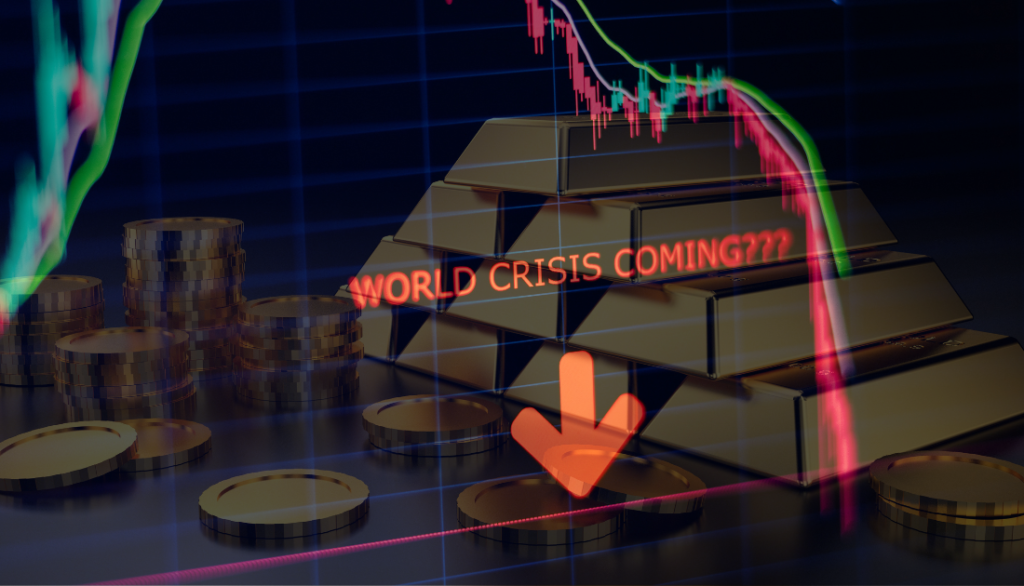Gold prices experienced a significant drop on Monday, falling over 2% as investors moved away from the safe-haven asset amid a broader sell-off in the global financial markets. The decline in gold prices came as stock markets tumbled, driven by growing concerns about a potential recession in the United States. By 11:39 GMT, spot gold had fallen to $2,393.66 per ounce, while U.S. gold futures decreased by 1.4% to $2,434.10.
The sharp decline in gold prices followed a week of heightened volatility in the commodities market. Last week, both gold and silver saw substantial gains, with gold prices reaching a lifetime high as investors bet on potential interest rate cuts from the Federal Reserve following disappointing U.S. job data.
Silver also surged, surpassing $28.50 per troy ounce. However, these gains were short-lived as the markets reacted to weaker-than-expected U.S. economic reports and a resurgence in the Japanese yen against the U.S. dollar, which added to the volatility in global financial markets.
Rahul Kalantri, Vice President of Commodities at Mehta Equities Ltd., noted the mixed market dynamics, stating,
Gold and silver exhibited significant price volatility last week, with gold reaching new highs amid hopes for Fed rate cuts. However, both metals were unable to sustain these highs due to weaker U.S. job reports and factory orders data, which heightened recession fears. Despite this, gold and silver prices found support due to dollar weakness and escalating tensions in the Middle East.
Kalantri added that gold prices are currently finding support at $2,418-$2,398, with resistance expected at $2,454-$2,474. Similarly, silver has support at $28.10-$27.88 and resistance at $28.64-$28.85.
The broader market decline has been driven by growing concerns about the U.S. economy. Last Friday, data revealed that the U.S. unemployment rate rose to 4.3% in July, marking an increase that heightened expectations of an interest rate cut by the Federal Reserve. With the possibility of a recession looming, markets are now anticipating a potential reduction of up to 50 basis points by the central bank in September.
Historically, gold has been viewed as a safeguard against geopolitical and economic uncertainties, performing well in low-interest-rate environments. However, the current market climate, marked by fears of a recession, has led to a sell-off in gold and other precious metals as investors reassess their risk exposures.
The situation was further complicated by the performance of the Japanese yen, which made a strong comeback against the U.S. dollar. This development, along with ongoing economic challenges, has increased volatility across global financial markets. The Bank of Japan’s recent actions have also contributed to this volatility, leading to a sell-off in gold as panic spread among investors.
Jateen Trivedi, Vice President and Research Analyst for Commodities and Currency at LKP Securities, commented on the market dynamics, saying,
Gold prices opened strong on the Comex, reaching as high as $2,455. However, panic triggered by the Japanese yen and the Bank of Japan has contributed to a sell-off in gold. With U.S. interest rates still elevated, gold has encountered resistance, particularly around ₹70,500. A potential preemptive U.S. interest rate cut could increase buying pressure in gold, especially given the recent unsupportive economic data from the U.S.
Trivedi also highlighted the expected price range for gold, predicting it will remain between ₹69,000 and ₹71,000 in the near term, with continued volatility likely.
Other precious metals also suffered significant losses during Monday’s trading session. Spot silver fell by 5.7% to $26.92 per ounce, while platinum dropped 4.1% to $918.35 per ounce. Palladium also experienced a steep decline, decreasing by 4.5% to $849.05 per ounce, reaching its lowest point since August 2018.
The declines in platinum and palladium are particularly notable as these metals are used in engine exhaust systems to reduce emissions. The long-term risks associated with the global shift towards net-zero emissions targets are placing additional pressure on these metals, further contributing to their recent price drops.
As global markets continue to navigate economic uncertainties, the performance of precious metals like gold and silver will likely remain closely tied to broader economic indicators and central bank actions. Investors will be watching closely to see how these dynamics unfold in the coming weeks.

